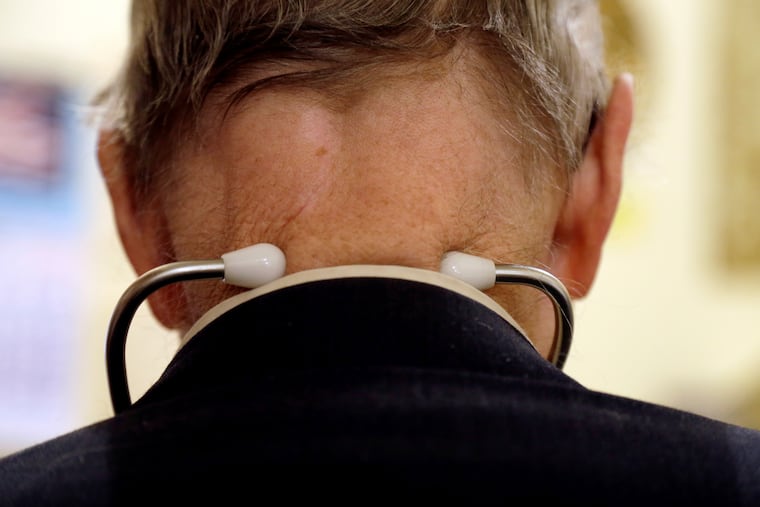The stethoscope is becoming obsolete, and that’s a real shame l Opinion
Laying hands on the patient is part of the tradition of medicine. It is a sign of trust and is the essence of the physician-patient relationship.

I recently accompanied a friend to the emergency department of one of our major academic institutions when she complained of “coughing up blood." She was triaged almost immediately and then put in a cubicle.
The ED was not busy but we waited a while to be seen. Blood work and a chest X-ray were ordered, but no senior radiologist was available to interpret the X-ray. She was eventually seen by an intern, two residents, and a senior physician (all of whom wore a stethoscope around their necks) and then a CAT scan of the lungs was ordered as well as a special test for pulmonary clots.
This occurred over the span of eight hours. At no time did a health-care practitioner examine her lungs, mouth, or nose. The history obtained was rudimentary and repeated by each health-care provider who saw her. Finally, I asked the intern, who was the only physician in the room at the time, whether he was going to examine her. He was embarrassed and said of course. He interpreted her lung examination “as normal.”
The chest X-ray and CAT scan were eventually read by the radiologist, who found pneumonia.
This episode led me to question the value of the physical examination and the stethoscope in modern-day medicine. When I was trained, clinicians could diagnose many lung conditions with their physical examination skills alone. However, the accuracy of the physical examination depended on the skill of the examiner. Likewise, the value of the X-ray is dependent on the skills of the radiologist who interprets it. What have we lost by devaluing the physical examination?
Laying hands on the patient is part of the tradition of medicine. It is a sign of trust and is the essence of the physician-patient relationship. The act of human contact bonds the physician and patient and is part of our privileged role as physicians. In addition, the physical examination performed by a skilled clinician is very cost effective and can provide a great deal of information.
During my medical school training, we were taught to listen to the patient’s chest directly on the skin, not through clothing. Listening through clothing changes the lung sounds and can lead to a misinterpretation. However, at most of my recent visits to a physician, I have been examined through clothing. This is the way we see examinations by “television” doctors.
I spoke to several younger physicians about this case. Physical examination skills are not as emphasized in medical school training as they were when I attended school. More sophisticated modalities for making a diagnosis are now available. However, I suggest that a skilled clinical diagnostician might have been able to make the diagnosis of pneumonia on my friend eight hours earlier just with a thorough physical examination, without the chest X-ray and CAT scan, thus saving time, money and patient angst.
The same argument can be made about other parts of the standard physical examination. In the hands of a skilled diagnostician, many pathologies of the abdomen can be discovered through observation, palpation, listening with a stethoscope, and percussion. Very often today, the young clinician just performs an examination of the abdomen with an ultrasound machine. What is lost when the physician does not lay his or her hands on the patient with an abdominal complaint?
Medical technology can do wondrous things. But we must not lose sight of the value of old-fashioned human touch. It can still be the doctor’s — and patient’s — best friend.
Paula L. Stillman is a professor of medicine at Jefferson Health System, and a member of the Inquirer’s Health Advisory Panel.